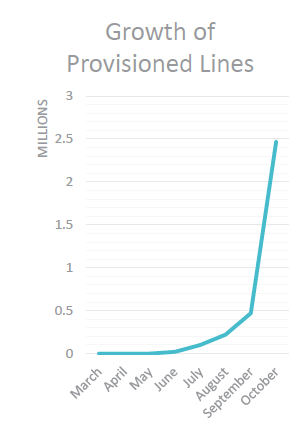Back in 2005, yes, 2005 I wondered when WiFi phones would allow text messaging – I suggested there was an opportunity for companies to take advantage of the merging of the VoIP and consumer electronics spaces. Of course eight years later the world is a different place. The iPhone was two years from being introduced back then, Blackberry was in the early days of becoming king of the smartphone market and Microsoft and Nokia were strong players. Now Apple and Google are dominant and the others mentioned above are scrambling. Remember when Android made us think of robots, not phones?
messaging – I suggested there was an opportunity for companies to take advantage of the merging of the VoIP and consumer electronics spaces. Of course eight years later the world is a different place. The iPhone was two years from being introduced back then, Blackberry was in the early days of becoming king of the smartphone market and Microsoft and Nokia were strong players. Now Apple and Google are dominant and the others mentioned above are scrambling. Remember when Android made us think of robots, not phones?
Eight years later the need to expand the universe of texting devices still exists.
 In a recent conversation with ZipWhip CEO John Lauer we spoke about the company’s landline texting solutions which unify your texting across devices, home phones and 800 numbers. (See the company’s growth chart on the left) The benefit to doing this is to open up texting more broadly. I know many adults who never email, they only text because they aren’t that technical and aren’t comfortable with email. Yet they want to communicate with others who all text. Even though there are a slew of OTT options like Facebook, texting is still a crucial communications medium.
In a recent conversation with ZipWhip CEO John Lauer we spoke about the company’s landline texting solutions which unify your texting across devices, home phones and 800 numbers. (See the company’s growth chart on the left) The benefit to doing this is to open up texting more broadly. I know many adults who never email, they only text because they aren’t that technical and aren’t comfortable with email. Yet they want to communicate with others who all text. Even though there are a slew of OTT options like Facebook, texting is still a crucial communications medium.
This is obviously the case across the globe, meaning it isn’t just the younger generation using their fingers to do the talking.
To facilitate the merging of all phone numbers as texting vehicles, Lauer told me his company has provisioned millions of texting lines in the cloud and now 800 numbers and landlines. Users simply communicate with apps and a web page which are associated with a telephone number.
Businesses such as hair salons and law offices use the ZipWhip to communicate with their clients. We all know younger consumers us phones more for nonverbal communications than talking and if companies want to interact with customers in the way they are most comfortable, adding the ability to text makes a lot of sense. Moreover, texting is asynchronous which means just as consumers can text with multiple people at once, so can a business. This means you can service more simultaneous customers via text than talking and of course this saves businesses money.
If you count iMessages as texts (most users don’t know the difference) and add in landline texting, the market is still growing according to the company
Another benefit is these solutions allow the use of a full-sized device to communicate and multiple people can access an account as opposed to many mobile phones which don’t easily allow for access by more than one person.
John and I discussed the OTT competition and he feels that texting is extremely relevant and will remain the universal medium connecting everyone. He exclaimed, “It is not a walled garden.” Moreover he says that many phone numbers are like dotcom domain names and text-enabling these numbers lets you communicate using this valuable real estate.
ZipWhip has solved what I consider to be an important problem… They text-enable all phone numbers and allow texting in the cloud so individuals can communicate asynchronously via multiple devices – some which actually have full-sized keyboards. Businesses with clients who are comfortable text-messaging should certainly explore using ZipWhip’s services for the reasons outlined above.





